The fate of the oceans’ most threatened rays hangs in the balance this week at CITES
This week, nations from around the world are gathered in Geneva, Switzerland to vote on trade restrictions and regulations for endangered species. In the midst of heated negotiations, days of meetings behind closed doors and strong lobbies before Parties make their decisions, the eyes of marine scientists and ocean conservation organisations have been focused on one group of threatened species in particular: the giant guitarfishes and wedgefishes that we commonly count among the ‘shark-like rays’. Population trends for fishes in these families are alarming, and their steady freefall has gone largely unnoticed by the wider conservation community and in public consciousness. The latest scientific assessments, led by Dr Peter Kyne from the IUCN Species Survival Commission’s Shark Specialist Group, flagged the dire situation for the 16 species of giant guitarfish and wedgefish, placing them ahead of sawfishes as the most threatened marine fish families in the world. They are earmarked for listing on CITES Appendix II this week, a move that will go a long way to improve the measures in place to manage the catch and trade of species that have declined by over 70% across much of their range.
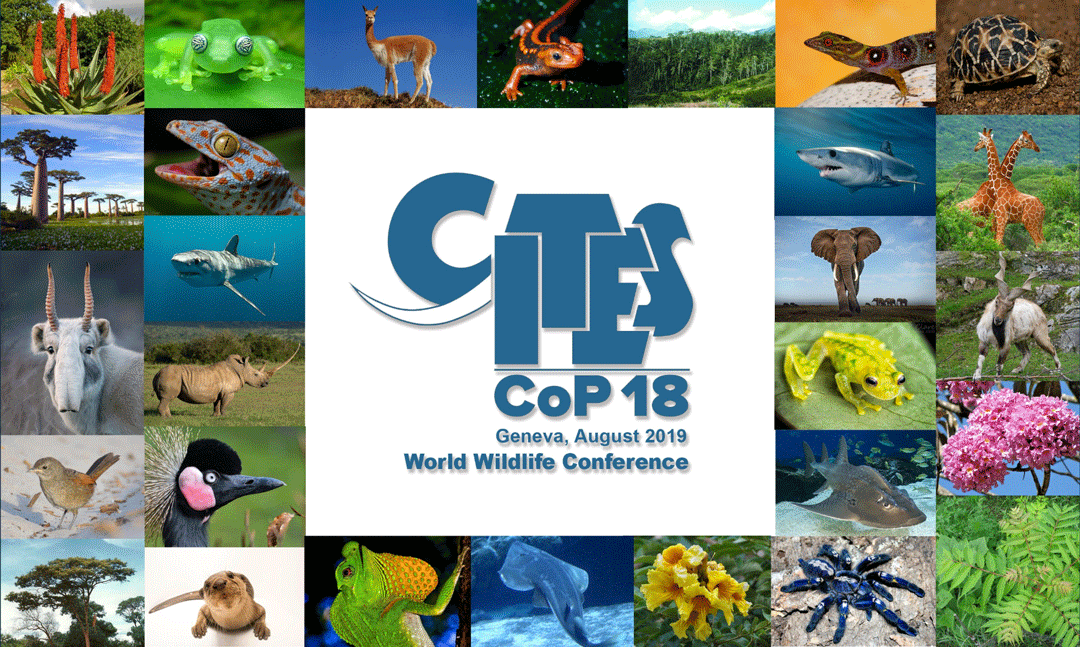
Image © The Convention on International Trade in Endangered Species of Wild Fauna and Flora - CITES
Which are the shark-like rays?
There are 62 species from five different families that fall into the category ‘shark-like rays’. All of these families: the sawfishes (Pristidae), wedgefishes (Rhinidae), giant guitarfishes (Glaucostegidae), guitarfishes (Rhinobatidae) and banjo rays (Trygonorrhinidae), fall under a bigger umbrella, in the order Rhinopristiformes. That’s why you might see scientists dub them Rhino Rays, a nod to their place in the taxonomic tree. These are all slow-growing species that tend to exhibit life-history traits that make them especially vulnerable to overfishing: they reach sexual maturity later in life and have low fecundity (produce fewer offspring). Often camouflaged on the seafloor, most of these species have slipped into near extinction with a relatively low conservation profile.
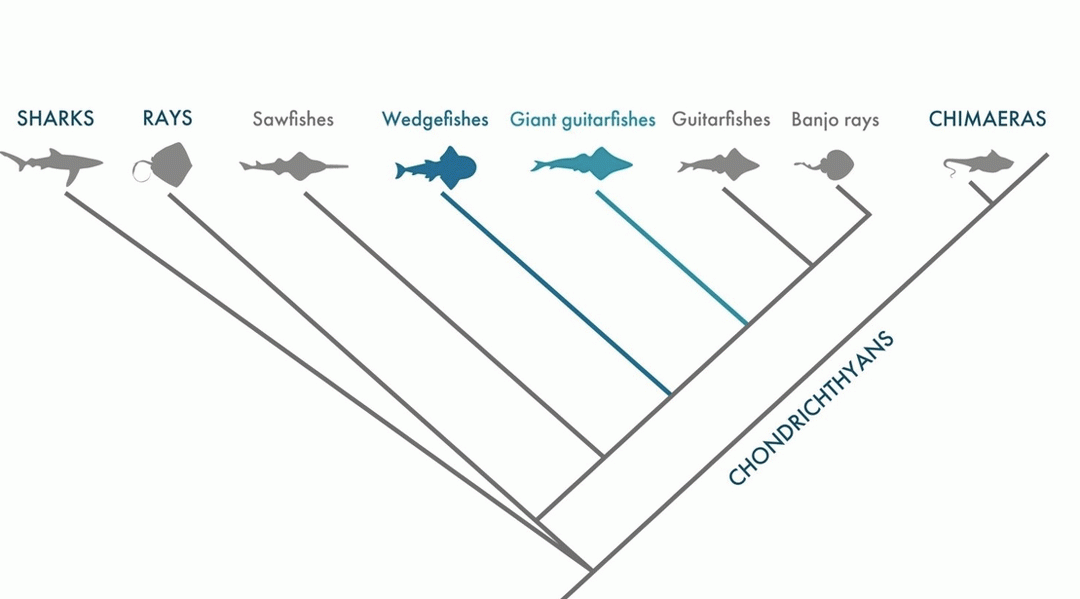
Image © Rima Jabado | Gulf Elasmo Project

Image © Rima Jabado | Gulf Elasmo Project
Which shark-like rays are being discussed at CITES?
There are six giant guitarfish species that belong to the family “Glaucostegidae”, and all are listed as Critically Endangered on the IUCN RedList. Their populations have declined by up to 50% in some regions, but across most of their range, their numbers have actually dropped by a dire 80%, with some populations locally extinct in places. According to information from the latest assessment by Peter Kyne and his colleagues, including project leader and Gulf Elasmo founder, Rima Jabado, giant guitarfishes like Glaucostegus typus currently lack adequate management plans and education programmes, and no monitoring or species recovery plans are in place. Experts assert that listing these species on CITES Appendix II will galvanise the political impetus needed to better manage these crashing populations.
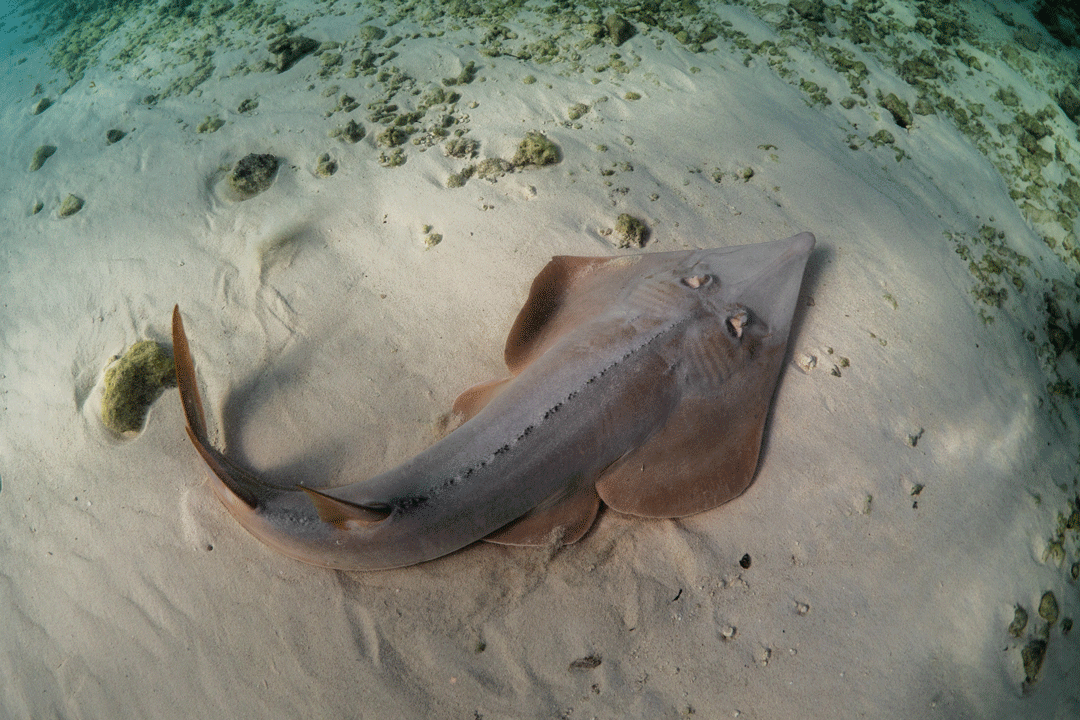
Giant guitarfish photographed at Heron Island, Australia. Photo © Danny Copeland
Wedgefishes belong to the family “Rhinidae”, and are ranked as the third most threatened family globally. Of the 10 species in this family, only one (the Eyebrow Wedgefish (Rhynchobatus palpebratus)) is not listed as Critically Endangered. As with most of the other shark-like rays, many wedgefishes have been largely left to slip through the proverbial conservation management net. While several scientists and conservationists have dedicated their whole careers to investigating this family, most species fall short of the collective public imagination. AA Yaptinchay, an SOSF project leader leading research into bottlenose wedgefish in the Philippines, says that the country has supported the proposed listing of oft-ignored wedgefish since 2017.
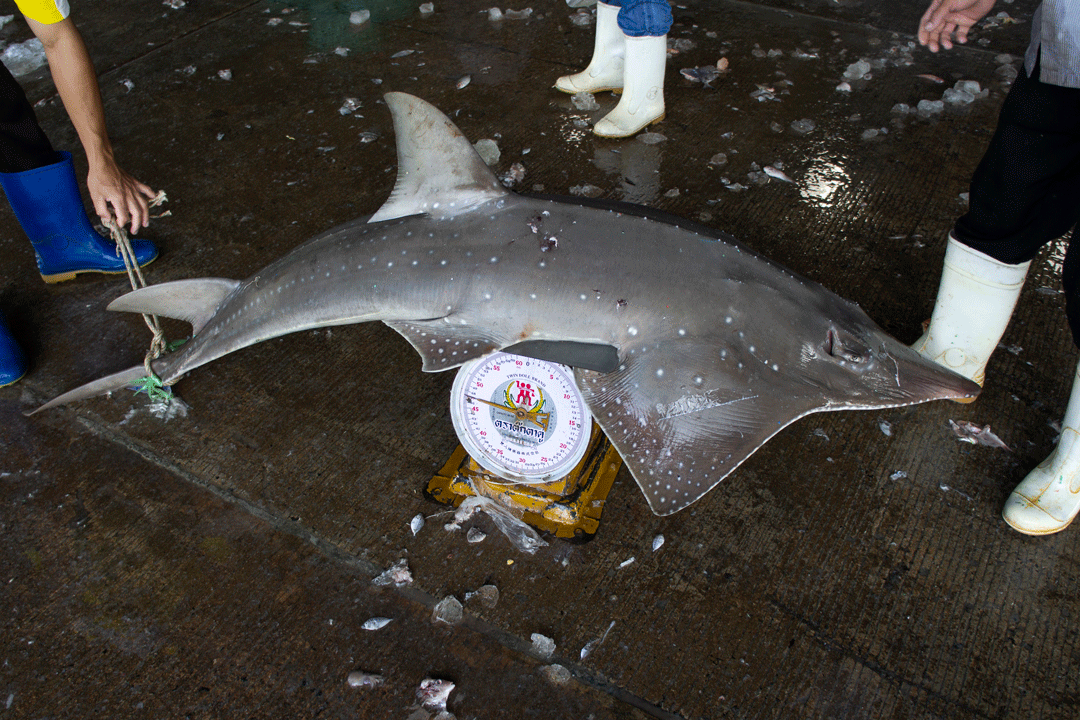
A bottlenose wedgefish being weighed at a fish landing site. Photo © Sirachai "Shin" Arunrugstichai
What is CITES?
The Convention on International Trade in Endangered Species of Wild Fauna and Flora (CITES) is an agreement between nations to regulate trade in threatened animals and plants, to prevent their extinction through human-use. Today, CITES comprises 183 Parties; that is, nations that have voluntarily agreed to adhere to the Convention. Species that are listed by CITES can be placed on one of three Appendices, depending on what level of protection is required for their populations. This week’s negotiations for giant guitarfishes and wedgefishes are focused on Appendix II, which states that trade in these species must be managed so that their use by humans doesn’t conflict with the long-term survival of the species.
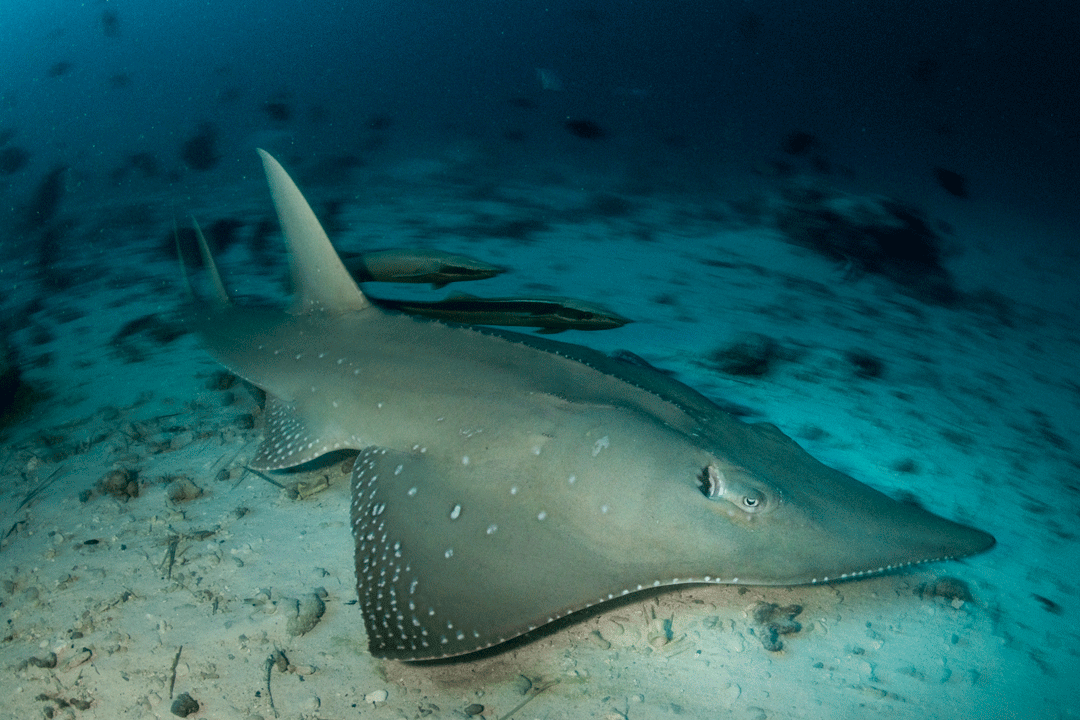
A bottlenose wedgefish glides over the sandy ocean floor, Republic of Maldives. Photo © Sirachai "Shin" Arunrugstichai | Crossroads Project | Singha Estate
What might listing on CITES Appendix II mean for these shark-like rays?
Several sharks are already listed on CITES appendices, and their example has shown that this tool helps unlock the political will needed to better manage CITES-listed species in national waters. If giant guitarfishes and wedgefishes are listed this week, any governments that trade in their products must be able to demonstrate that this is legal and sustainable. This kind of success is only possible, however, when the implementation of CITES regulations is supported by everyone involved. Listing species is one thing, but the necessary tools must be available to help countries meet the expectations outlined by CITES Appendix II. For the sharks and rays, the emphasis placed on this phase of CITES listing has been unprecedented. Working together over a six-year period, NGOs and partner organizations, as well as the CITES Secretariat, ramped up the resources available to help governments implement both the current and proposed listings. All these documents exist in both English and French and are free for download. We’ve summarized what’s available from the CITES Sharks website, and included their handy web links if you want to access the best available science to manage these species:
VISUAL IDENTIFICATION GUIDES: The fins of giant guitarfishes and wedgefishes are commonly traded in dried and unprocessed forms, so enforcing CITES Appendix II regulations will rely on being able to identify these families as their products cross country borders. With the support of the Wildlife Conservation Society and Vulcan, the Gulf Elasmo Project has compiled a guide to identifying these species.
GENETIC PROTOCOLS FOR THE PROPOSED SHARKS AND RAYS: Today, genetic testing can help verify suspected CITES-listed products (like fins) that are traded. Doing so relies on sound science and practical protocols – and now there’s a guideline to the latest protocols that can help sleuth the source of hard-to-identify shark and ray products.
NDF TUTORIALS: Once a species is listed on CITES Appendix II, governments must be able to show that any trade in the products of that species is legal, sustainable and adheres to CITES regulations. How do they best do this? A collection of tutorials and examples of best-practice are available online to assist.
